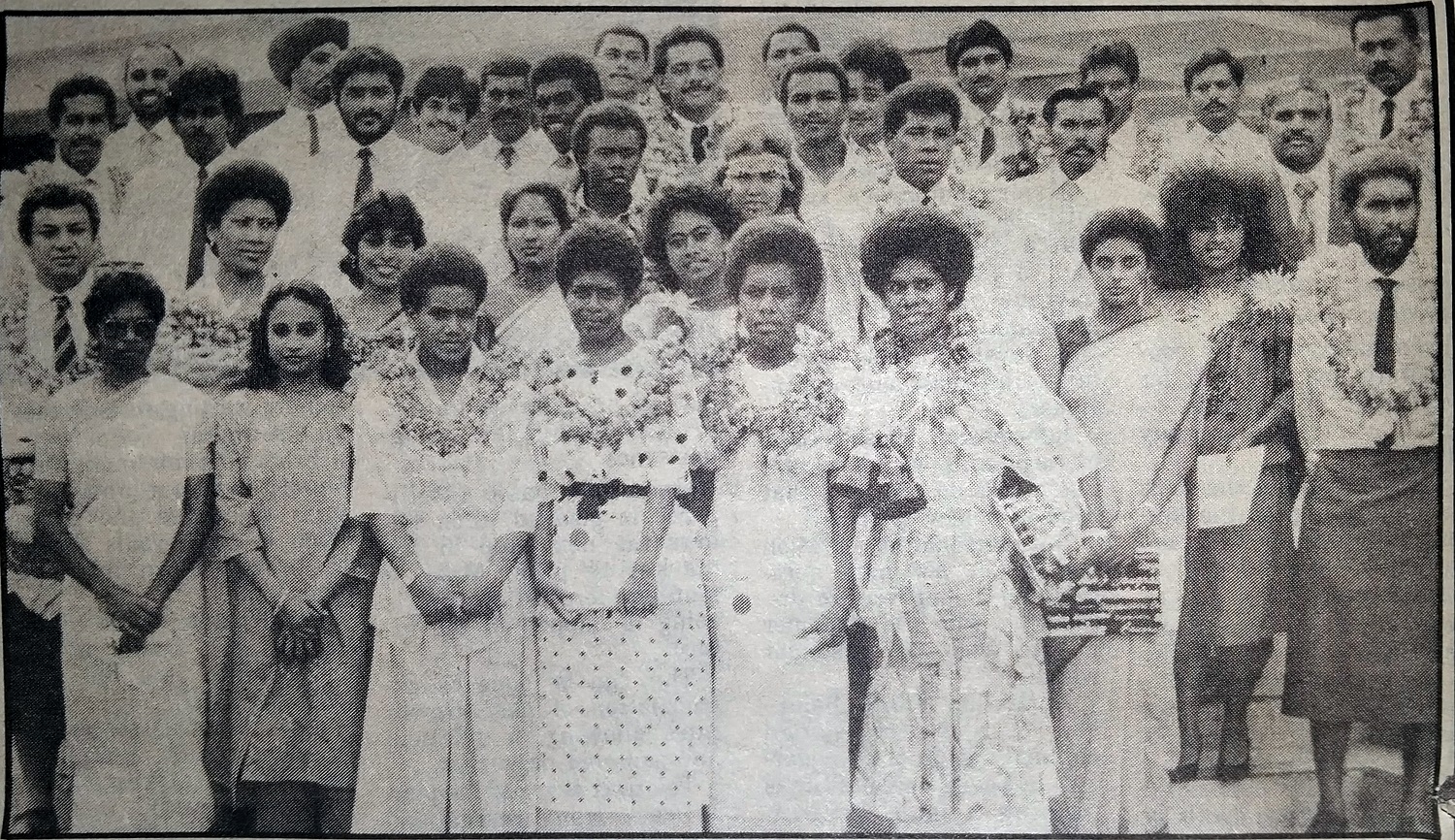On December 9, 1988, the Fiji School of Medicine’s 100th year anniversary celebrations featured in The Fiji Times, providing a brief historical insight into the school.
The article stated that since its establishment the school boasted a total of 789 graduates; some of whom went on to become exceptional regional leaders.
These included Fiji’s then prime minister Ratu Sir Kamisese Mara, former prime minister Dr Timoci Bavadra , former Tuvaluan prime minister Dr Tomasi Puapua, former vice president of the Federated State of Micronesia Dr Hiroshi Ishmael, the deputy former prime minister of Cook Islands, Dr Terepai Moate, and the former speaker of Papua New Guinea’s parliament, Dr John Kiri.
The article said the idea of a school was introduced by William McGregor’s scheme to train Fijian youths, carefully selected from amongst the most intelligent of the Fijian people.
According to Margaret Guthrie, author of ‘Misi utu’, a book on FSM’s first principal, Dr David Hoodless, (her father); the need for a school was to deal with the lack of manpower to deal with epidemics of infectious diseases.
Students were trained with necessary skill sets, administrating vaccination, carrying out quarantine, providing first aid and dispensing simple forms of medicine. In June 1888, the Native Practitioner’s Ordinance was passed to give legal cover for the trainees to operate.
In November that year the first group of graduates completed a three-year course of training. Those graduates were, Ratu Feretiriki Temesia, Ratu Wiliame Uluiqalau and Jemesa Tunakece.
Dr Guthrie described the course as ‘extremely rudimentary’ viewed from modern day standard but essentially practical.
“After serving as dressers in the colonial hospital for three years, the students were able to treat all the cases they were likely to meet in the district” she said.
The tutors for the course then were Dr McGregor and acting chief medical officer at the time, Glanville Corney. While the training course was administered under the name of Fiji Medical School, there were no school building and the teachers served on a part time basis.
One of the rooms at the hospital (Suva) served as a classroom and five lectures were given per week. Dr Guthrie said despite the condition of training, the scheme was successful in providing valuable medical service under direct government control.
She added that during the course of three years, each student assisted in many post mortem examinations, gave scores of injections, assisted in operations, gained practical experience in the hospital dispensary and was distributed to different wards of the hospital.
With the opening of the Colonial War Memorial Hospital in 1923, the need arose for extra assistants, making a re-organisation of the training of Fijian practitioners necessary and the urgent need for a properly equipped bacteriological laboratory.
The concept of regional training of medical students began with Dr SM Lambert from the Rockefeller Foundation of New York. Dr Lambert, who came to work on various health projects, was impressed with the performance of his medical assistant, Malakai Veisamasama (father of the late Jone Veisamasama).
He conceived the notion of a regional training school. His scheme was supported by the Rockefeller Foundation which promised a grant of 8000 pounds sterling. Interestingly, Queen Salote of Tonga was the first to accept the concept and made a grant towards the venture.
She had asked how much the scheme would cost. When told, she retorted, “is it a tremendous amount that we can’t bear our share?”, and promptly made a grant of 1500 pounds sterling.
Five other regional countries gave in their share, including Fiji. The school opened in 1928 under the new name, Central Medical School and Dr David Hoodless was appointed the first principal.
The school operated from the present outpatient dental facility at CWM. It was officially opened on December 1928, by then governor Sir Eyre Hutson with 40 students of whom one was a Fijian of Indian descent.
“The average of one Fijian Indian student a year was maintained for many years,” said Dr Guthrie.
In 1931, the three-year course was extended to a four-year course. One of the oldest surviving graduates of the school in 1988 was Dr Tomu Uluilakeba who had graduated in 1934.
The main event in the history of the school was the opening of the main school building in Tamavua on December 17, 1953 by Queen Elizabeth II In 1961 the school was renamed Fiji School of Medicine.
In 1979, following a World Health Organisation report (the Cole report), the University of the South Pacific agreed to award a degree in medicine to FSM graduates, provided the major recommendations in the report were implemented.
In 1981, the university senate approved the recommendations and a memorandum of understanding was signed by the two parties, with USP agreeing to award an external MBBS degree to FSM graduates.
In 1982 the first group of 36 MBBS students enrolled after a foundation year course at USP. The article said that in recent years, the school had been more turbulent with problems ranging from finances to staffing and lack of adequate facilities and teaching equipment.
The article also said that in May 1987 staffing problems were so acute that on various occasions authorities had to consider a shutdown of the school.
“I’m confident, by the beginning of 1989 we will have sufficient staff for the school to continue operating”, said FSM principal at the time, Dr Brian Cameron.
In 1988 the course was taught largely by teachers being recruited for a short spell of about three months. Dr Cameron had shared his disappointment on the issue and hoped that the following year would see more improvement on the matter.
In 1987, 18 of the 36 regional students had left FSM for the University of Papua New Guinea. Seven of them were expected to return that year (1988).



